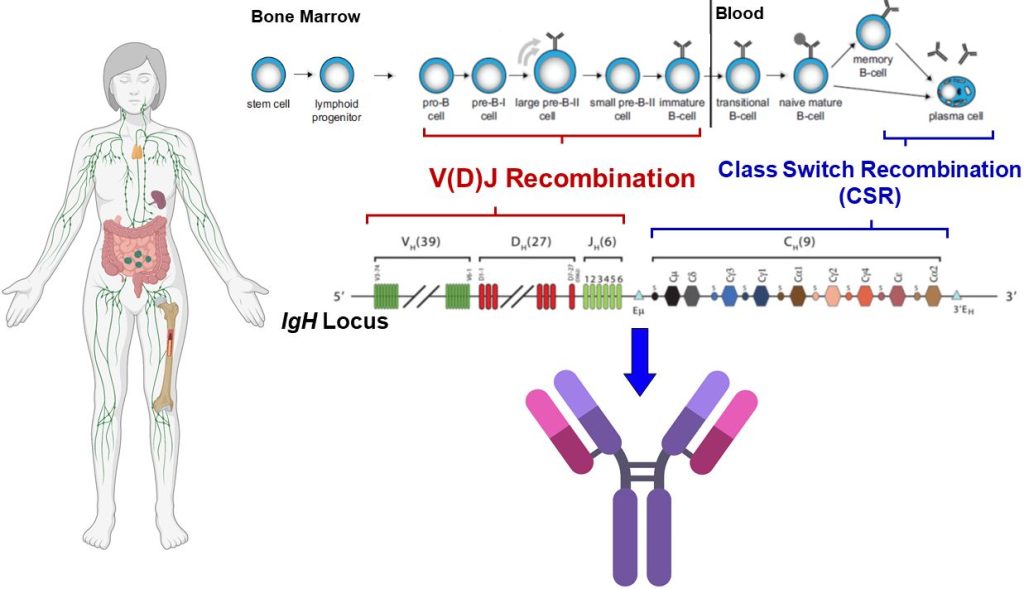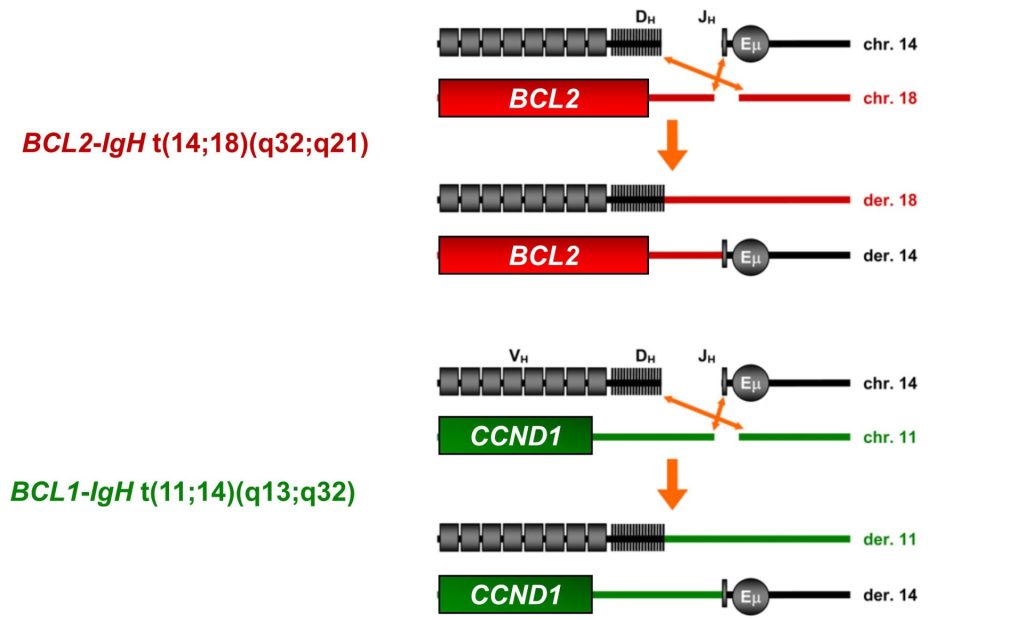DNA damage can cause mutations

Mutation; noun: a departure from the parent type in one or more heritable characteristics, caused by a change in a gene or a chromosome. In other words, each of your parents contributed one set of genes to make you. A mutation is when when of those genes changes. It no longer resembles either gene from either parent. It is different. Different may not be good.
Mutations as subtle as a single nucleic acid change or chromosome rearrangements as severe as a translocation alter the genetic code and can change a normal cell into a cancer cell. Translocations are a major focus of study in the Pannunzio lab and are initiated when both strands of the DNA double helix are severed. This is referred to as a DNA double-strand break or “DSB”. When 2 DSBs occur at the same time in a cell, a translocation can occur.
Programmed DSBs occur in B cells

DSBs can form by pathological means (radiation, chemotherapy, etc.) or via a physiological program. An example of the latter are the rearrangements that occur on chromosome 14 at the gene encoding the immunoglobulin heavy chain (IgH), a major component of the antibodies that comprise our adaptive immune response. DSBs breaks initiated in B cells during V(D)J and class switch recombination lead to rearrangements that result in a diverse antibody pool capable of recognizing a variety of antigens. Without these programmed DSBs, we would be vulnerable to a wide-range of infections.
Translocations involving IgH are common in many blood cancers

Typically, the programmed breaks at the IgH gene are repaired through a process called Non-Homologous End Joining (NHEJ). When this repair process fails, the DSB at IgH can join with a DSB elsewhere in the genome. This results in many of the reciprocal translocations related to several leukemias and lymphomas.

Oncogenes are meant to control cell proliferation and prevent cancer. When translocations occur near oncogenes, their gene expression is altered. Now these oncogenes support hyperproliferation and provide the cells with a growth advantage that can lead to cancer. Understanding how these translocations form starts with understanding why the non-IgH DSBs occur.
DSBs at many non-IgH loci are NOT random

The non-IgH DSBs are root cause of these pathogenic translocations and no one knows exactly how they form. What we do know is that these DSBs are not random. At the BCL2 locus, for example, a DSB anywhere in a 30 kilobase region can lead to the same clinical form of cancer, but 50% of all breaks occur in a 175 basepair regions known as the major break point locus or MBR. These clusters of DSBs involved in these IgH translocations have been mapped to several places in the human genome and we refer to them as ‘fragile zones‘.
Understanding the causes and consequences of DSBs at fragile zones is what drives research in the Pannunzio Lab. We use human B cell lines, primary human B cells, and even the genetic model Saccharomyces cerevisiae to uncover this mystery. Check out our publications section to see how we are doing!
